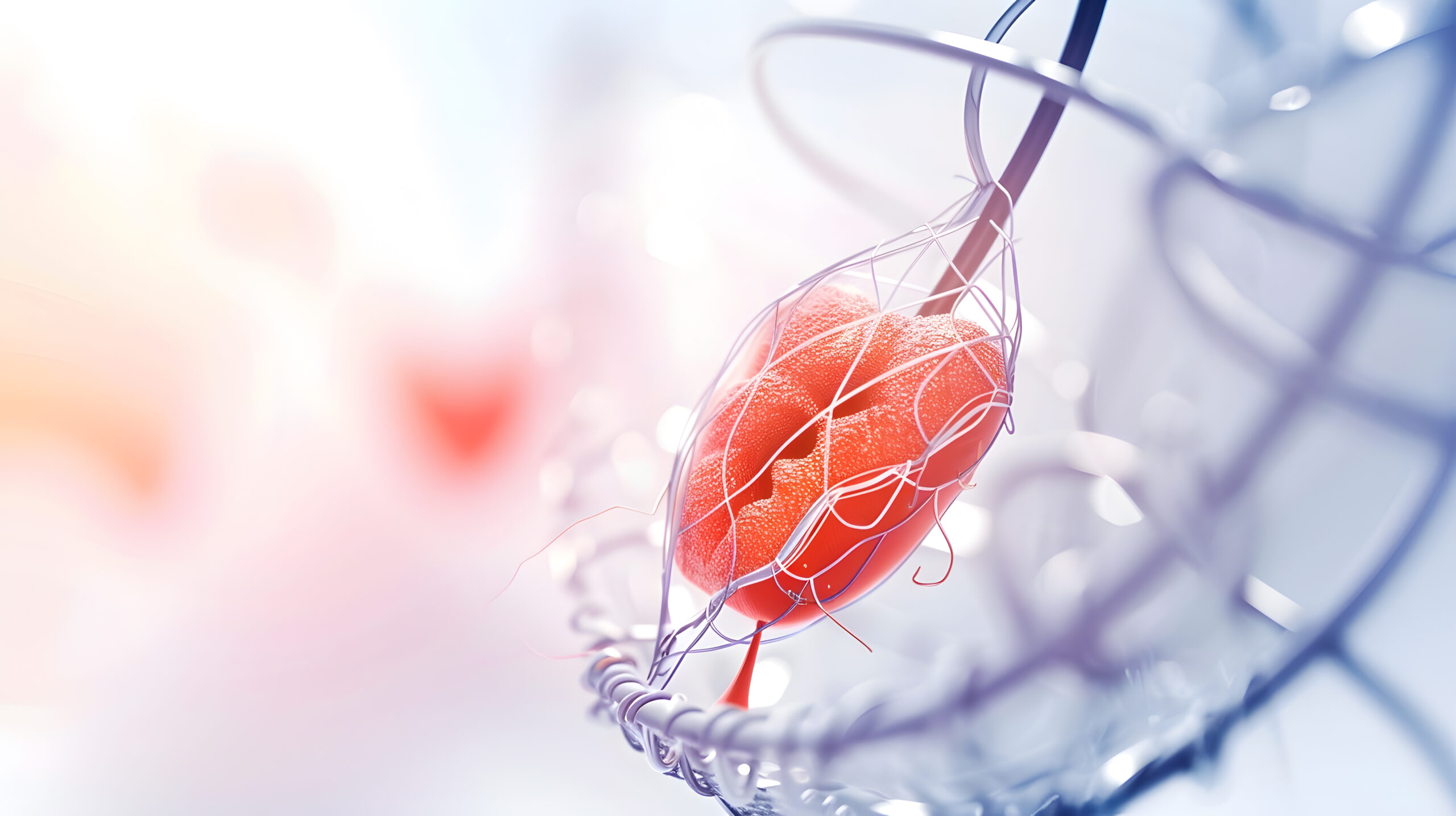THE BENEFITS OF CARDIAC CATHETERIZATION
Lorem ipsum dolor sit amet, consectetur adipiscing elit.

THE BENEFITS OF CARDIAC CATHETERIZATION
Cardiac catheterization offers a wealth of benefits when understanding and treating heart conditions. By choosing our Atlanta cardiologists for this procedure, you’re opting for top-tier cardiac care that can significantly impact your heart health and overall quality of life.
One of the primary benefits of cardiac catheterization is its unparalleled diagnostic accuracy. Our Atlanta heart doctors use this procedure to obtain detailed, real-time images of your heart’s structure and function. This level of precision allows us to identify issues that might not be visible through external tests like ECGs or echocardiograms. Whether it’s detecting blockages in your coronary arteries, assessing heart valve function, or measuring pressures within your heart chambers, cardiac catheterization provides our team with invaluable insights into your heart’s condition.
Another significant advantage is the procedure’s dual nature as a diagnostic and treatment tool. When you visit our Atlanta cardiology clinic for cardiac catheterization, you might find that diagnosis and treatment can occur in a single session. For instance, if our cardiologists discover a blocked artery during the catheterization, they can often perform an angioplasty and stent placement immediately. This approach can save you time, reduce the need for multiple procedures, and potentially provide immediate relief from symptoms.
Cardiac catheterization also plays a crucial role in guiding treatment decisions. The detailed information gathered during this procedure allows our Atlanta heart specialists to tailor your treatment plan to your needs. Whether it’s determining the need for medication adjustments, recommending lifestyle changes, or planning for more advanced interventions like bypass surgery, the insights from cardiac catheterization enable our team to make informed, personalized decisions about your care.
Cardiac catheterization can be particularly beneficial for patients with complex heart conditions. Our Atlanta cardiologists can use this procedure to evaluate the effectiveness of previous treatments, monitor the progression of heart disease, or assess your suitability for certain cardiac procedures. This comprehensive approach ensures you receive the most appropriate and effective care for your unique situation.
Another key benefit is the procedure’s minimally invasive nature. Unlike open-heart surgery, cardiac catheterization requires only a small incision, typically in the groin or arm. This means less pain, faster recovery times, and a reduced risk of complications compared to more invasive procedures. Many of our patients are surprised by how quickly they can return to normal activities after cardiac catheterization at our Atlanta heart clinic.
For patients experiencing acute cardiac events, such as a heart attack, the benefits of cardiac catheterization can be life-saving. Our Atlanta cardiologists can quickly perform emergency catheterizations to identify and treat blocked arteries, potentially preventing extensive heart damage and improving long-term outcomes.
Cardiac catheterization also plays a vital role in preventive cardiology. For patients at high risk of heart disease, this procedure can detect potential issues before they become serious problems. This early detection allows our Atlanta heart doctors to implement proactive treatment strategies, potentially preventing heart attacks or other cardiac events before they occur.
The emotional benefits of cardiac catheterization shouldn’t be overlooked either. Many patients find that the detailed information provided by this procedure offers peace of mind. Whether the results confirm a clean bill of health or identify issues that can be addressed, having a clear understanding of your heart’s condition can alleviate anxiety and empower you to take control of your heart health.
By choosing our Atlanta cardiologists for your cardiac catheterization, you’ll benefit from the procedure and our team’s extensive experience and expertise. Our specialists are skilled in interpreting the results of cardiac catheterizations and translating them into effective treatment plans. We’re committed to using this powerful tool to its fullest potential to improve your heart health and overall well-being.
The benefits of cardiac catheterization extend far beyond the procedure itself. It’s a gateway to comprehensive, personalized cardiac care that can enhance your quality of life and potentially add years. Trust our Atlanta heart doctors to guide you through this important step in your cardiac health journey.
Read more about the benefits of cardiac catheterization and how CVG provides comprehensive cardiac care.
The Benefits of Cardiac Catheterization for Heart Attack Patients
What is Cardiac Catheterization?
How Does Cardiac Catheterization Work for Heart Attack Patients?
Cardiac catheterization is often used to diagnose and treat heart attacks. When a patient has a heart attack, a blockage in one of the coronary arteries prevents blood flow to the heart muscle. This can cause damage to the heart muscle and lead to severe complications. Cardiac catheterization can help in several ways:
Diagnosis:
A cardiac catheterization is a valuable tool for diagnosing heart attacks. During the procedure, contrast dye is injected into the coronary arteries, which makes them visible on x-ray images. This allows doctors to pinpoint the location and extent of the blockage and determine the best course of treatment.
Angioplasty:
If the blockage is causing a heart attack, doctors can perform angioplasty during cardiac catheterization. A balloon-tipped catheter is inserted into the blocked artery and inflated to open the blockage. Sometimes, a stent may be inserted into the artery to help keep it open.
Thrombectomy:
Another treatment option during cardiac catheterization is thrombectomy. This procedure involves using a catheter with a special device to remove the blood clot causing the blockage. This can quickly restore blood flow to the heart muscle and reduce damage.
Benefits of Cardiac Catheterization for Heart Attack Patients
Accurate Diagnosis Cardiac catheterization is a precise diagnostic tool that can help doctors determine the extent and location of blockages in the coronary arteries that supply blood to the heart. By using X-ray images, doctors can pinpoint the location of the blockage and determine the severity of the damage to the heart muscle.
Immediate Treatment Most times, cardiac catheterization can be used to treat blockages that are causing a heart attack. During the procedure, doctors can insert a balloon-tipped catheter into the blocked artery to open it up and restore blood flow to the heart. Sometimes, a stent may also be placed in the artery to help keep it open.
Improved Outcomes Studies have shown that cardiac catheterization can improve outcomes for heart attack patients. By quickly diagnosing and treating the blockage, doctors can help minimize the damage to the heart muscle and reduce the risk of complications such as heart failure, arrhythmias, and death.
Minimally Invasive Cardiac catheterization is a minimally invasive procedure that involves only a tiny incision in the skin to insert the catheter. This means it is associated with less pain, scarring, and recovery time than more invasive procedures such as open-heart surgery.
Low Risk of Complications Cardiac catheterization is a safe procedure with a low risk of complications. The most common side effects include bruising, bleeding, and swelling at the insertion site. In rare cases, more serious complications such as stroke, heart attack, or allergic reaction to the contrast dye may occur.
Personalized Treatment Cardiac catheterization allows doctors to tailor treatment to each patient’s needs. By assessing the extent and location of the blockage, doctors can determine the best course of treatment, which may include medications, lifestyle changes, or more invasive procedures such as angioplasty or bypass surgery.
Improved Quality of Life For heart attack patients, cardiac catheterization can help improve their quality of life by reducing symptoms such as chest pain, shortness of breath, and fatigue. Restoring blood flow to the heart can help patients regain their strength, energy, and ability to perform everyday activities.
Conclusion
Cardiac catheterization is a valuable tool in the fight against heart disease, particularly for heart attack patients. Accurate diagnosis, immediate treatment, and personalized care can help improve patients’ outcomes and quality of life. If you or a loved one is experiencing symptoms of a heart attack, it is vital to seek medical attention immediately to receive a timely diagnosis and treatment.
Contact us today to learn more about Cardiac Catheterization and doctor suggestions for heart treatment based on the results of the photos or tests.
Why Choose CVG?
Related Conditions:
- Causes And Treatment For Heart Arrhythmia
- Causes And Treatment Of Pulmonary Stenosis
- Expert Insights on Cardiac Catheterization
- Expert Insights on Low Blood Pressure
- Exploring the Latest Advances in Atrial Fibrillation Treatment
- Dangerously high cholesterol?
- Get Your Blood Pressure Test Today!
- Understanding Electrical Cardioversion
- What Are ACE Inhibitors Used For?
- What foods are high in cholesterol?
- What Heart Flutters Can Mean
- What is Heart Failure & How to Treat it?
- What Is The Success Rate Of The Watchman Procedure?
Top Conditions:
- How long can someone live with an enlarged heart?
- Pros and Cons of the Watchman Device
- Risks and Complications of Cardiac Catheterization
- Side Effects Of The Watchman Device
- The Benefits of Cardiac Catheterization
- The Dangers Of High Blood Pressure
- The Dangers Of High Cholesterol
- The Watchman Implant Procedure
- Tips To Lower High Cholesterol
- Understanding Cardiac Catheterization
Call to Schedule an Appointment
Board-certified Doctors
CVG’s twenty board-certified heart doctors will guide you through your healthcare journey with the utmost compassion and individual attention. We aim to provide you with state-of-the-art cardiac care that includes the full spectrum of services, from testing to diagnosis and treatment. The doctor/patient relationship is built on trust. Through our combined efforts, we can conquer any challenge that comes our way.
Invasive therapies may also treat an abnormal heart rhythm, such as electrical cardioversion, which sends electrical impulses through your chest wall and allows normal heart rhythm to restart, or catheter ablation that disconnects the abnormal rhythm’s pathway. Suppose your doctor determines that electrical devices are the best course of action. In that case, you may be given a permanent pacemaker, an implantable cardioverter-defibrillator (ICD), or biventricular (B-V) pacemakers and defibrillators.
How CVG Can Help
CVG offers multiple services that can discover an enlarged heart or conditions that will lead to it. At CVG, we perform stress tests that will observe blood flow and test for various forms of heart disease. There are three types of stress tests that we perform:
- A treadmill test is a test in which you will walk on a treadmill that gets faster and steeper every 3 minutes. This will stress your heart so that our nurse or doctor can determine your heart rate and blood pressure.
- An echo test is performed before and after your treadmill test to determine how well your heart pumps blood.
- A nuclear stress test is a treadmill test that is prefaced by an injection of medicine that shows the flow of blood to your heart.
We also offer cardiac catheterization to diagnose and treat several heart issues. If any of these tests determine a problem, we offer treatment solutions such as atrial fibrillation testing and catheter ablation. Learn more about our services here, or schedule an appointment to talk to our doctors.
Schedule Your Appointment with a CVG Atlanta Area Cardiologist
Expertise, experience, and compassion are the pillars of CVG’s patient-centered cardiac care. Please schedule your appointment with CVG today. Call (770) 962-0399 or 678-582-8586. You may also request an appointment online. If you have an emergency, don’t contact us online; please call 911.
Locations That Treat Cardiac Catheterization













